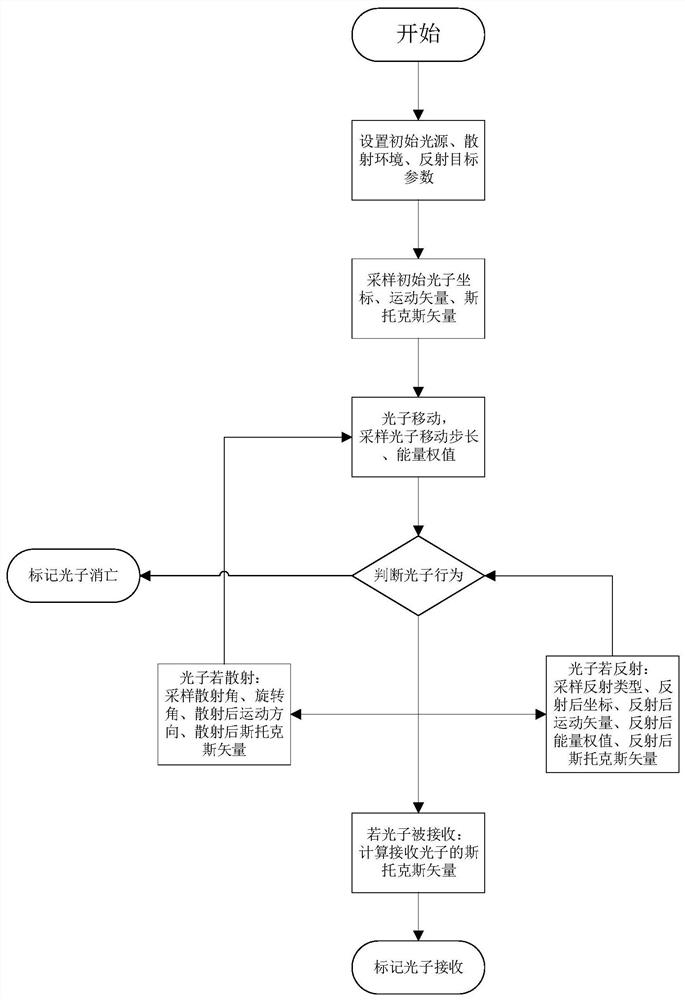Simulation method for reflecting polarized light by underwater target based on bidirectional reflection theory
An underwater target and two-way reflection technology, applied in the field of underwater optical imaging, can solve problems such as insufficient prior knowledge
- Summary
- Abstract
- Description
- Claims
- Application Information
AI Technical Summary
Problems solved by technology
Method used
Image
Examples
Embodiment 1
[0134] Embodiment 1 effectiveness test
[0135] In order to verify the reliability of the simulation model of the present invention, the present invention simulates the experimental environment in the paper "Influence of Smoke Concentration on the Transmission Characteristics of Polarized Light" by Zhang Su et al., and compares the simulation and experimental results. In the paper, the experimental principle is as follows figure 1 As shown, the light emitted by the laser is attenuated by the attenuation plate, and then polarized by the polarizer. By adjusting the angle of the polarizer, different linearly polarized light can be generated. The 1 / 4 wave plate is used to generate circularly polarized light. According to It needs to be rotated in or out of the optical path at any time. The polarized light passes through the smoke simulation environment, and the bituminous coal particles are burned in the smoke simulation environment, and the particle concentration in the smoke env...
Embodiment 2
[0140] In order to analyze the polarization difference imaging of the target using linearly polarized light under the same scattering environment, the simulation model of the present invention is used to conduct experiments on the variation of the polarization degree distinction between backscattered light and target reflected light as the optical thickness changes. The total number of photons emitted is 10 6 1, emission source frequency 532nm, Gaussian laser beam emission half-angle 0.0015 / 2 and beam width 0.001, emission photon Stokes vector is linearly polarized light S 0 =[1 1 0 0], the number of scattering particles per unit volume in the underwater environment is 10 9 , particle radius 2 μm, complex refractive index m=1.52-0.001i, optical thickness 1, reflective surface roughness 0.2, reflective material refractive index 1.46, reflective material absorption coefficient 1.32 reflective material reflective coefficient 0.052. Simulation results such as Figure 6 shown.
...
PUM
| Property | Measurement | Unit |
|---|---|---|
| Complex refractive index | aaaaa | aaaaa |
Abstract
Description
Claims
Application Information
 Login to View More
Login to View More - R&D
- Intellectual Property
- Life Sciences
- Materials
- Tech Scout
- Unparalleled Data Quality
- Higher Quality Content
- 60% Fewer Hallucinations
Browse by: Latest US Patents, China's latest patents, Technical Efficacy Thesaurus, Application Domain, Technology Topic, Popular Technical Reports.
© 2025 PatSnap. All rights reserved.Legal|Privacy policy|Modern Slavery Act Transparency Statement|Sitemap|About US| Contact US: help@patsnap.com



